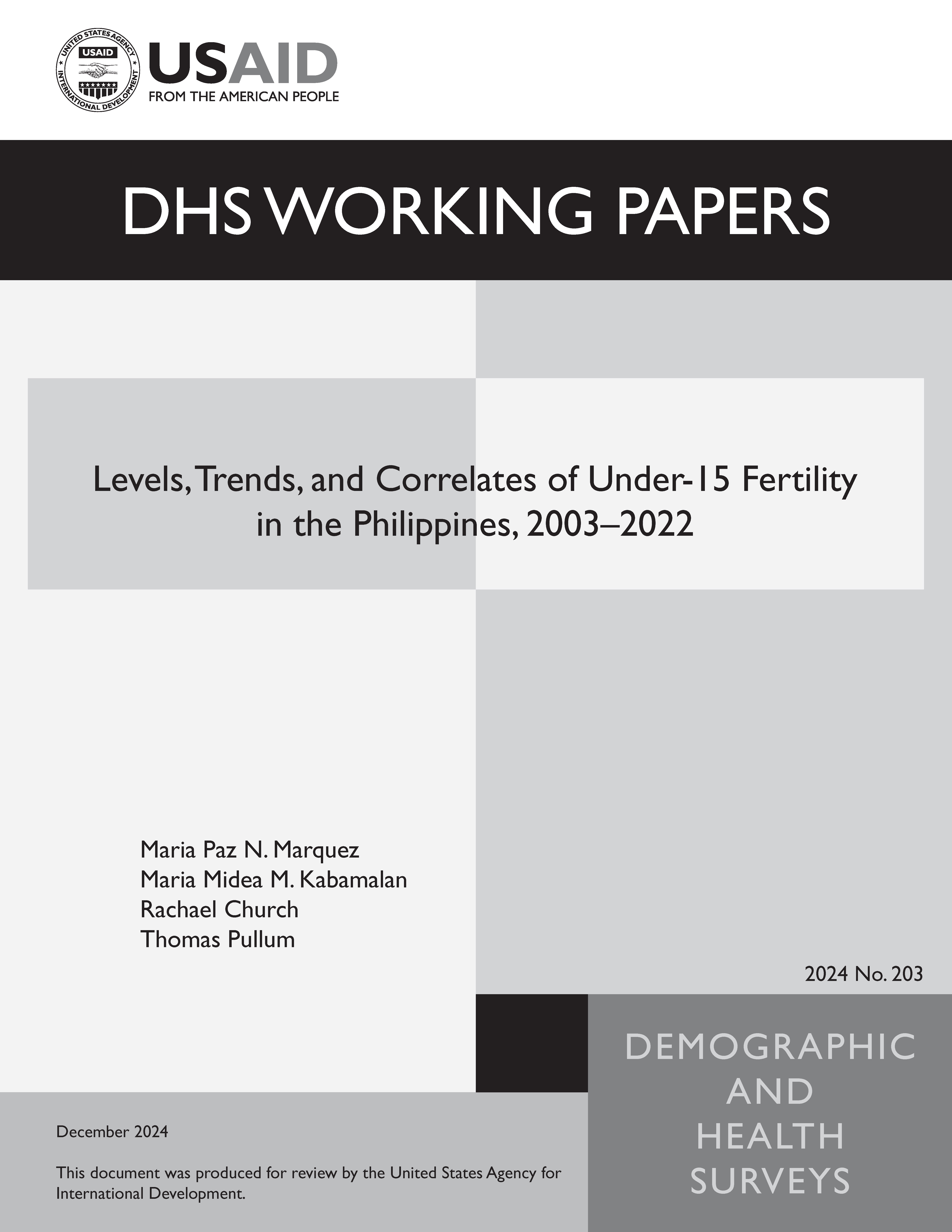There is no printed copy available to order.
Abstract:
Amid declining fertility rates among adolescent women age 15–19 in the Philippines, attention has now shifted to very young adolescents (age 10–14). However, limited information is available on childbearing patterns within this critical age group. This study aimed to establish levels of and trends in fertility among girls under age 15 in the Philippines and examine the associated sociodemographic factors. The analysis drew on two major sources of demographic data—civil registration and vital statistics (CRVS) birth data from 2013 to 2022 and Philippines National Demographic and Health Survey (NDHS) data from five surveys conducted between 2003 and 2022.
Trend analysis of the CRVS data indicated a notable increase in births among 13- and 14-year-old girls over the study period. However, these births accounted for only a small proportion of the approximately 1.5 million annual births in the Philippines. This modest yet consistent trend was also observed across various NDHS indicators of under-15 fertility. Analyses of the 2022 CRVS birth statistics and the 2022 NDHS data revealed significant regional, health, educational, and economic disparities. Very young mothers from Northern Mindanao, Davao Region, SOCCSKSARGEN, Cagayan Valley, Central Luzon, and Zamboanga Peninsula had the highest risks of very early childbearing when compared with the national average. Births to mothers under age 15 were predominantly nonmarital and were associated with poorer health outcomes for infants, including lower birth weights. These very early pregnancies were also associated with early cohabitation or marriage, lower educational attainment, greater economic disadvantages, and a tendency toward larger families. We found a large age difference between the very young mothers and the fathers of their children, and most of the fathers were significantly older, raising concerns about informed consent and the effectiveness of legal protections against sexual exploitation.
The study’s recommendations for addressing these issues include strengthening the comprehensive sexuality education program for young girls to enhance sexual and reproductive health knowledge, expanding access to adolescent-friendly reproductive health services including contraception and antenatal care, developing educational and vocational programs to improve the economic prospects of young mothers, and implementing support mechanisms to help young mothers continue their education.
 Levels, Trends, and Correlates of Under-15 Fertility
in the Philippines, 2003–2022 (PDF, 545K)
Levels, Trends, and Correlates of Under-15 Fertility
in the Philippines, 2003–2022 (PDF, 545K)
